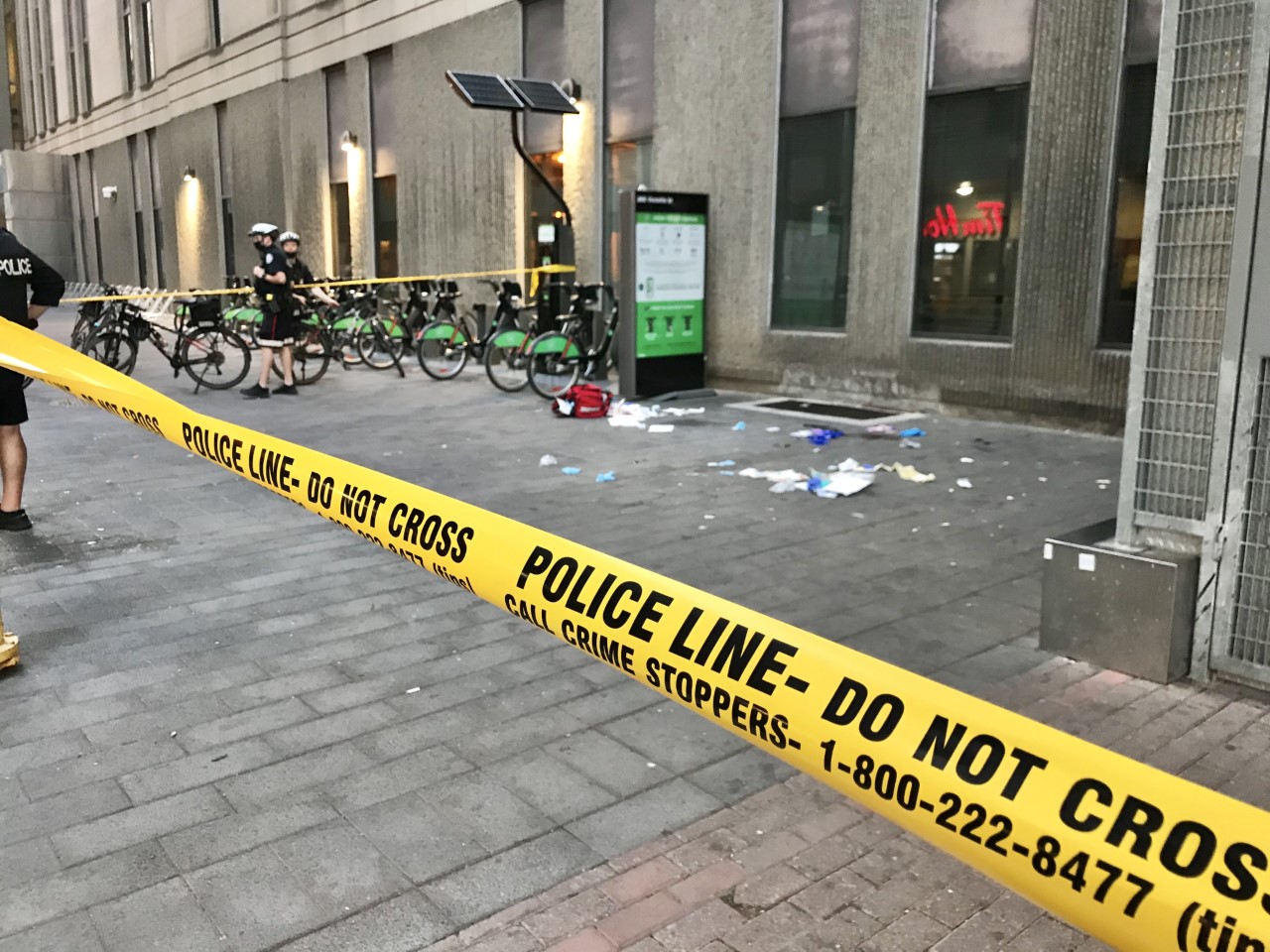A woman has been taken to hospital after being stabbed near Yonge-Dundas Square.
Police were called to Dundas and Victoria Streets just after 8 p.m. Wednesday.
The victim was found suffering from a stab wound and was taken to hospital with serious, non-life-threatening injuries.
A suspect reportedly fled the scene prior to police arriving.
More to come
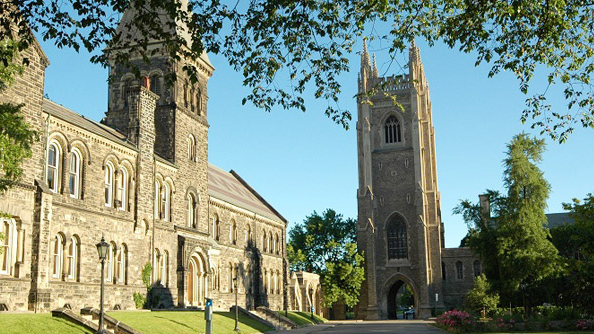
The University of Toronto will require students living in residence during the upcoming school year to be vaccinated against COVID-19.
The school made the announcement on Tuesday, saying the measure is supported by both Toronto and Peel Region’s public health units.
U of T says students should have their first dose prior to their move-in date and are strongly recommending they receive it at least 14 days before moving in.
The university further adds that those unable to get vaccinated before moving into residence will have two weeks following their move-in date to receive their first dose and they will help expedite access to vaccines, subject to supply.
“This requirement, which is endorsed by our local public health authorities, will enable us to give our students the residence experience that they expect – and that is so important to their growth and development – without compromising on their health and safety,” said Sandy Welsh, U of T’s Vice-Provost of students.
Welsh said in a statement students in residence who have not received a first dose within two weeks after moving in may be subject to additional public health restrictions.
“It’s really important that students be able to interact safely with one another and participate in the in-person programming that we know they value so highly.”
Western University in London, Ont. became one of the first to require students living in residence to be vaccinated against COVID-19 come September.
In-person learning across the province has been suspended until further notice.
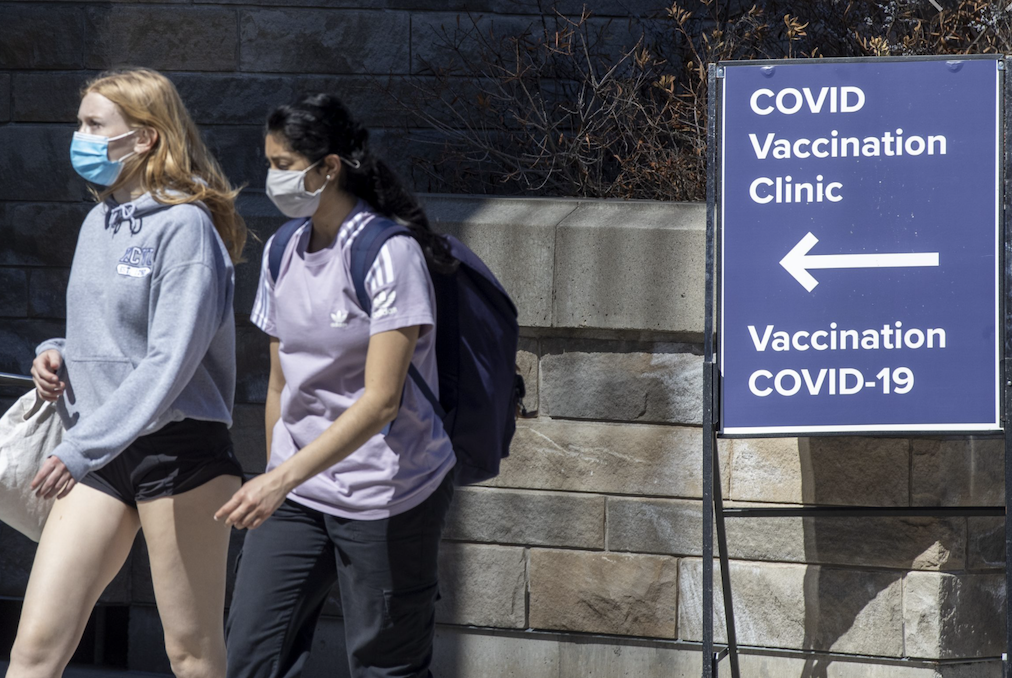
Ontario is reporting 469 new COVID-19 cases and 18 additional deaths on Tuesday.
For the second straight day the province sees the smallest daily increase of new infections since September. There have been fewer than 1,000 cases for nine consecutive days and it is the first time Ontario has reported fewer than 500 new cases since Sep. 26.
The province is reporting a test positivity rate of 2.7 per cent, down from 3.6 per cent one week ago. It is the lowest positivity rate since March 12.
There were 17,579 tests completed in the last 24-hour period.
Locally, there are 182 new cases in Toronto, 76 in Peel, 40 in the Porcupine Health Unit Region and 30 in Durham. The province reports no new cases for York Region but says this is due to data cleaning and updating of previously reported cases.
There were another 1,010 resolved cases, dropping the active case count. Resolved cases have outnumbered new infections each day since mid-April.
The province reported 525 cases and 15 deaths on Monday.
There are now 621 people hospitalized in the province with 481 in the ICU. Hospitalizations are down nearly 200 since one week ago while ICU numbers have dropped more than 100 in the last week.
There were another 158,209 vaccine doses administered in the last 24-hour period.
As of 8:00 p.m. Monday, 10,267,613 doses of the COVID-19 vaccine have been administered and 70.3 per cent of Ontarians over the age of 12 have received at least one dose, while 9.1 per cent of residents are fully vaccinated.
More Ontarians are eligible to book their second dose of a COVID-19 vaccine through the provincial system this week.
Those aged 70 and older, as well as people who received their first dose of an mRNA vaccine on or before April 18, can now book their second shot at mass immunization clinics on the province’s online booking portal or through its phone line.
AstraZeneca recipients who received the shot more than 12 weeks ago can also book an mRNA second dose through the provincial system.
Before Step 2 of the reopening plan can begin, the province has outlined that 70 per cent of Ontario adults need to have received at least one dose, and 20 per cent need to have received both doses.
The first dose mark of 70 per cent has already been met and the province hopes the acceleration of second doses will help meet the 20 per cent.
Ontario has announced that it will lift some pandemic restrictions and enter Step 1 of its economic reopening plan on Friday; a few days ahead of schedule.
The move will allow for patio dining at a maximum of four patrons per table and limited non-essential retail shopping to resume at 15 per cent capacity ahead of the upcoming weekend.
The reopening of non-essential retail is street entrance only and stores located inside of malls without a street entrance will reopen to the public in Step 2, now slated for July 2. Personal care services are also set to reopen as part of Step 2.
The Canadian Federation of Independent Business (CFIB), representing over 90,000 small businesses in Ontario, says they’re elated to finally get back to normal operations as of Friday.
The President of the CFIB is calling for the province to accelerate through the next stages of its reopening plan, which in its current state will lift restrictions further every three weeks depending on the pandemic situation and status of vaccinations at the time.

OTTAWA – The prime minister is categorizing a recent attack on a Muslim family in London, Ont. as a terror attack, adding his government will do more to dismantle hate groups.
The House of Commons opened session Tuesday morning in Ottawa with a moment of silence for the five victims in Sunday night’s hit-and-run.
Four family members – including a 74-year-old woman, 44-year-old woman, 46-year-old man, and a 15-year-old girl – were killed at a red light around 8:30 p.m. when a large, black truck came up behind the family and struck them at a high speed.
READ MORE: London, Ont. police believe Muslim family of 5 were targeted in hate-motivated, hit-and-run attack
A 9-year-old, the sole survivor and fifth family member, remains in hospital with serious injuries.
Police said Monday they believed the family was targeted because of their faith.
Justin Trudeau said during Tuesday’s session that the hit-and-run was terrorist attack, adding that we ll must take an active role in standing up to hate and terror.
“A family never made it home. Their lives were taken in a brutal, cowardly, and brazen act of violence. The killing was no accident. This was a terrorist attack, motivated by hatred,” he said.
He said this attack is one of many racist and Islamophobic attacks in the country and they need to stop.
“We not only have to say enough is enough–you must take action. We cannot allow any form of hate to take root because the consequences can be far too serious,” he said.
“To anyone who thinks racism and hatred don’t exist in this country, I ask you this: How do we explain such violence?”
He said non-Muslim Canadians need to understand the anxiety and fear that others are carrying.
“It is on all of us to understand that experience, be there to support, to help. We can and we must act.”
He pledged to do more to dismantle far-right extremist groups like the Proud Boys.
“We will continue to fund initiatives like the security infrastructure program to help protect communities at risk and their schools, and places of worship. We will continue to fight hate, online and offline,” he said.
The leaders of all national federal parties in the House of Commons will be in attendance at the vigil Tuesday night in London to honour the victims.
Police arrested the 20-year-old man they believe was responsible for the attack a short time after it happened in the parking lot of a mall seven kilometres away. They say he was wearing a body-armour-type vest at the time he was apprehended.
Police say there was no known prior relationship between the suspect and the victims and it’s believed he acted alone.
He’s been charged with four counts of first-degree murder and one count of attempted murder.
-with files from the Canadian Press
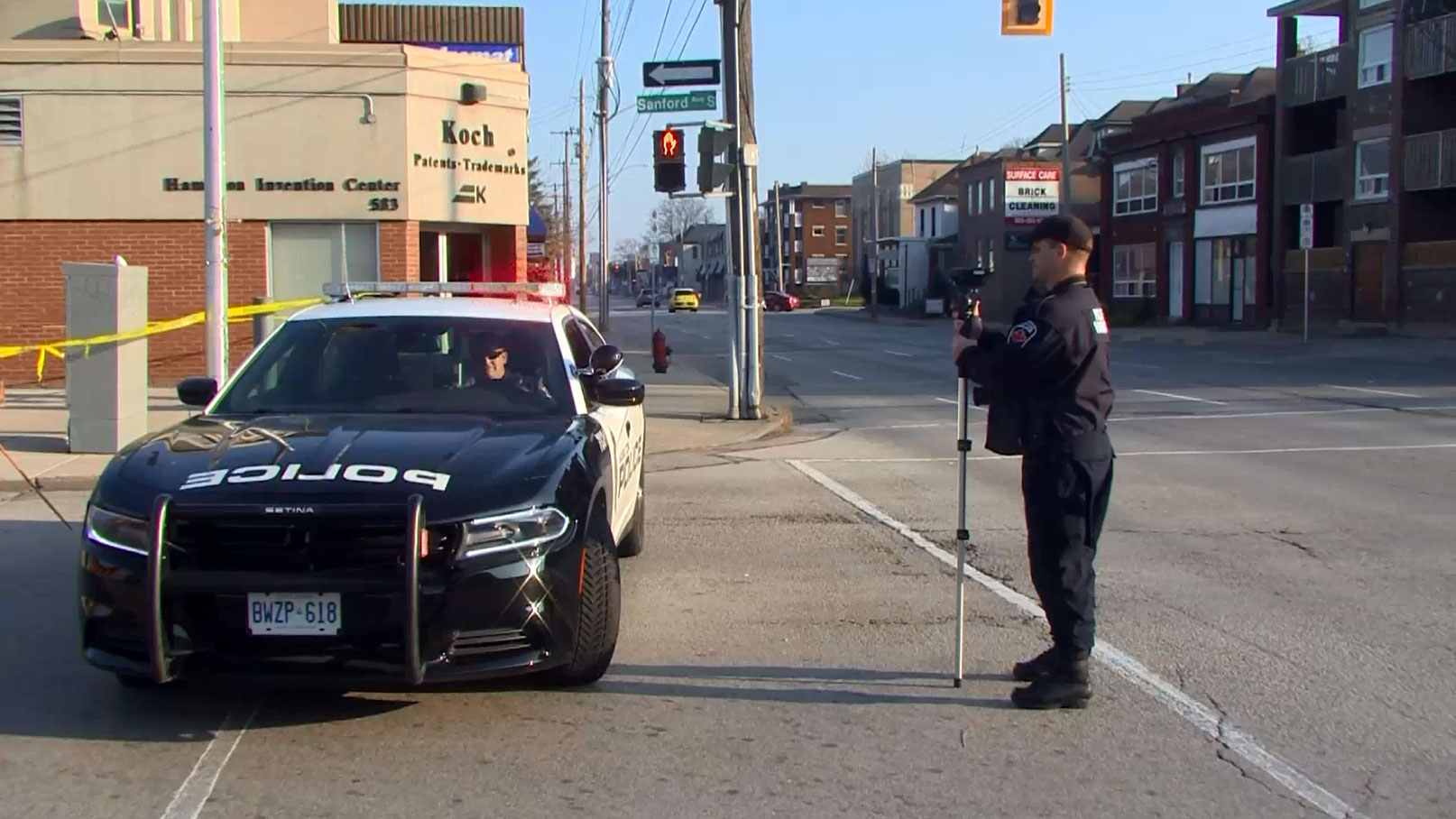
Two former paramedics were found guilty on Tuesday of failing to provide the necessaries of life in the shooting death of a teen in Hamilton four years ago.
Yosif Al-Hasnawi was shot in the stomach outside a Hamilton mosque in December of 2017 after he tried to stop two people from harassing an older man.
Believing his injuries were minor and from a pellet gun, the court heard the two paramedics did not rush him to hospital in a timely fashion, and Al-Hasnawi later died.
The paramedics also believed he was embellishing his injuries.
It was later determined that Al-Hasnawi was in fact shot with a handgun, with the bullet piercing a major artery. The two paramedics, Steven Snively, and Christopher Marchant, were later fired.
Both pleaded not guilty in the case.
In her closing statements, Crown attorney Linda Shin said: “They found Yosif lying down on the sidewalk, appearing to be in pain, unable to get up, altered and confused, and saying he could not breathe, with his distraught father and brothers nearby.”
“Despite finding Yosif in this condition, they ignored what their profession trained and required them to do. Their conduct was motivated by their subjective belief that Yosif was over-embellishing and acting, that he was faking.”
In finding them both guilty on Tuesday, the judge said they consciously ignored their training.
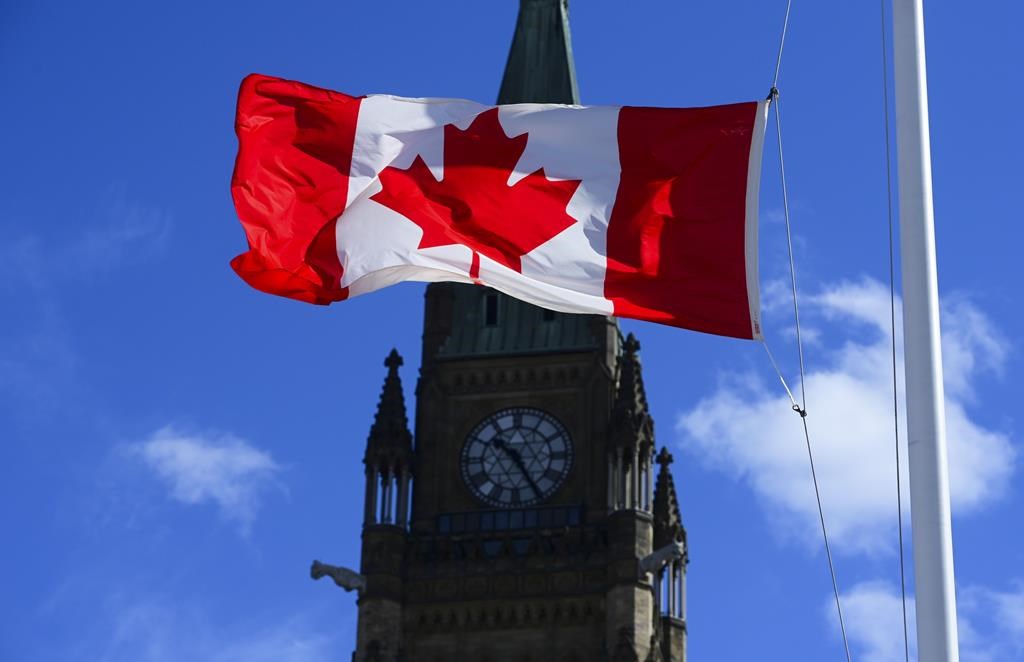
OTTAWA (NEWS 1130) – The Canadian government is not satisfied with recent comments from the Pope on residential schools.
“Residential school survivors and those dealing with it need to hear the Pope apologize, explicitly for the Catholic Church’s role in this tragedy to unlock the healing and support closure,” Crown Indigenous Relations Minister Carolyn Bennett said Monday.
In a statement, a spokesperson for Bennett’s office says the comments from Pope Francis over the weekend does not go far enough and they continue to believe a direct apology from the Pope is an important step in acknowledging the past and moving toward reconciliation.
On Sunday, Pope Francis expressed sorrow over the discovery of the remains of 215 children at the site of a former residential school in Kamloops, saying he feels a “closeness to the Canadian people.”
He failed to offer an apology, which frustrates Chief Bobby Cameron with the Federation of Sovereign Indigenous Nations in Saskatechewan.
“Whether it’s a 40-second apology or a 215-second apology, it’s part of the healing journey,” he said.
On Sunday, the Roman Catholic archbishop of Toronto said he felt Prime Minister Justin Trudeau’s calls for the Catholic Church to “step up” and take responsibility for its role in residential schools were “unhelpful and “not based on real facts.”
The Prime Minister’s Office says it stands by comments made last week, saying the Pope needs to apologize and the church needs to release all records or possibly face court action.
Green Party Leader Annamie Paul is not happy the Vatican has not yet formally apologized.
“It’s very important for healing and for reconciliation. Of course, they should do it. It’s disappointing that they haven’t,” Paul said.
This weekend, the Pope expressed sorrow but offered no apology.
Meanwhile, the Trudeau government is being pressured by the federal NDP to take quicker action on reconciliation with Indigenous peoples. This comes as the feds get pushback from the Catholic Church over demands to release records on residential schools and after were found at a former residential school in Kamloops.
The NDP’s motion, which should come to a vote Monday, demands quick action to help Indigenous peoples. In particular, Leader Jagmeet Singh wants fast implementation of outstanding Truth and Reconciliation recommendations, ending court cases around compensation for Indigenous children in the child welfare system and residential school survivors, and more resources to search for unmarked graves.
“We are hopeful that we can actually do something really meaningful … to fight for justice for Indigenous people. This is just a start. This, by no means, is a finish,” Singh said.
He says Trudeau needs to back his words up with action.
“We need more than a prime minister who wants to lower the flags at half mast or to take a knee at a memorial. We need action,” Singh said.

An Indigenous spirit garden to be constructed outside Toronto City Hall is closer to reality, with the design elements planned to honour residential school survivors nearly complete.
Partners involved with the Indian Residential School Survivors (IRSS) Legacy project have been working to transform the southwest corner of Nathan Phillips Square. The area will be considered “a place of teaching, learning, sharing and healing” with plans to incorporate a variety of public programs.
“That’s the biggest part of this project,” Theo Nazary, a strategic planner with the Toronto Council Fire Native Cultural Centre, explained. “The biggest part of that is the educational component for Indigenous people and non-Indigenous people.”
Among the permanent features will be the sculpture of a large snapping turtle on top of a boulder, which will have the names of Ontario residential schools carved into the bottom. The turtle will be surrounded by water and facing City Hall, in a symbolic gesture of resilience and strength.
There will be a three-season teaching lodge, built as a space for special programming, including different ceremonies and workshops. Other elements will include an Inukshuk and Métis voyager canoe.
A white pine tree, symbolizing a sign of peace and the Great Law that told the Haudenosaunee Nation they were to bury their weapons underneath, will be planted at the south end of the site. Next to that, the Three Sisters garden with corn, beans and squash will represent the need to work together in unity.
“All of these pieces offer a teaching,” Nazary said. “They offer gifts to people like us and we’re able to learn about the culture, and we’re able to celebrate indigenous culture and history, while also honoring the survivors, the families, and the children that were lost in communities.”
The Spirit Garden is being created as part of Ontario’s commitment to the Truth and Reconciliation Commission’s calls to action. Among the recommendations, was for provincial governments to “install a publicly accessible, highly visible, Residential Schools Monument in each capital city to honour Survivors and all the children who were lost to their families and communities.”
The City of Toronto has been involved in the planning, along with Toronto Council Fire Native Cultural Centre, and has committed $13 million to the project.
“That work has been incredible,” Patrick Tobin, the city’s director of arts and culture services, said. “It’s been highly collaborative and really productive in terms of the design that is resulted, both at how faithful it is to the original vision but how much of an enhancement it will be to the square and letting people learn that difficult history in residential schools in Canada.”
Construction of the Spirit Garden is expected to start this fall, once a general contractor is hired, with the project completed and ready for the public to enjoy in 2023.
“It’s been a learning process for all of us,” Nazary said. “I think it’s been a life-changing experience for me and for Council Fire and for all the individuals involved. I think this is what reconciliation is all about.”
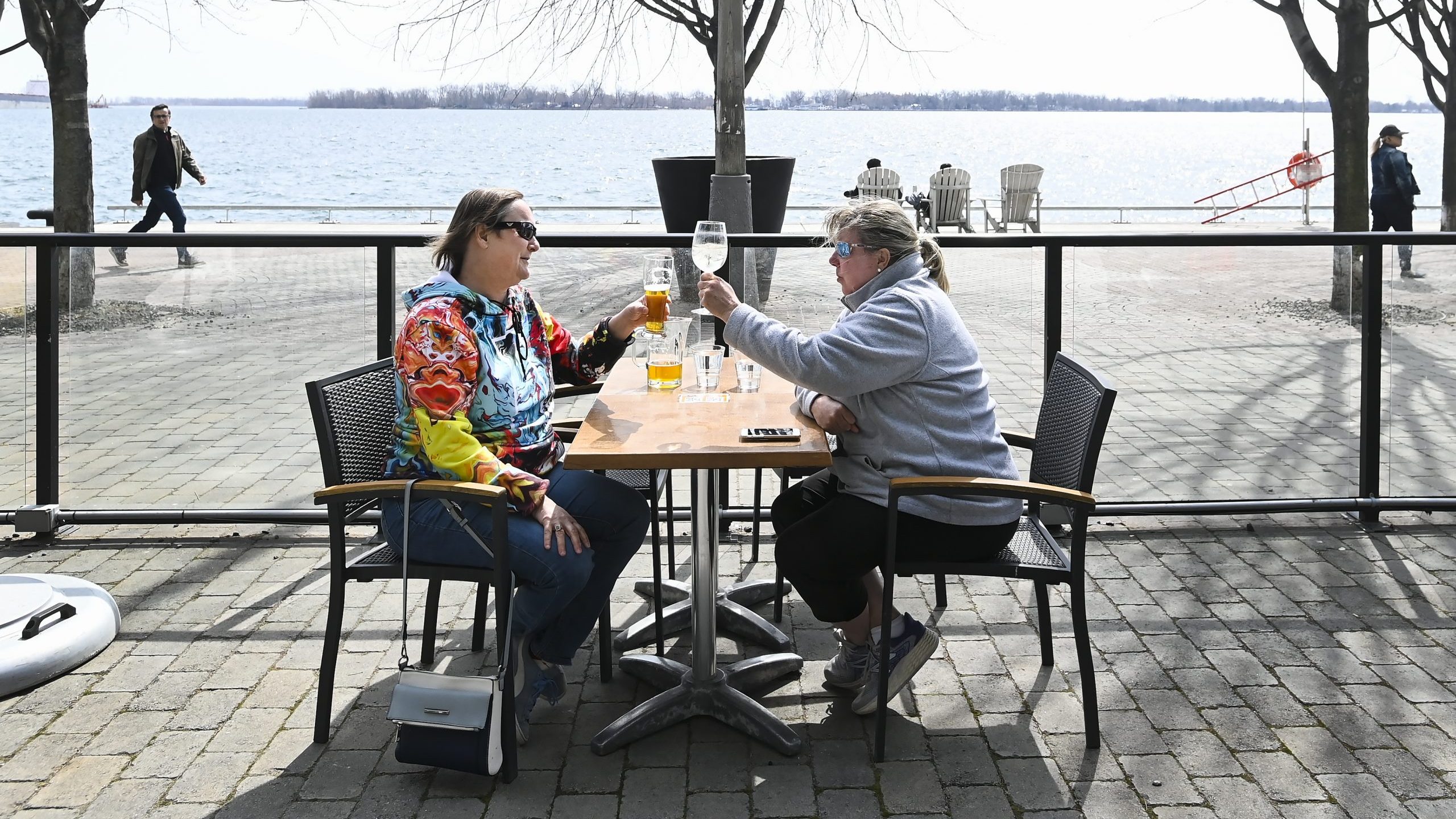
The Ford government’s “Roadmap to Recovery” is off to a promising start after the province announced Monday that Step 1 will begin a few days ahead of schedule, moving ahead on June 11 instead of the targeted June 14 date.
Premier Doug Ford announced back on May 20 that outdoor amenities would reopen with restrictions in place, revealing the three-step plan in the process.
As Ontario vaccinates more of its population at an accelerated pace, the three steps will be based on that supply and the daily clip at which people get the shot.
The province will also factor in COVID-19 case counts, percent positivity, and hospitalization rates.
As a result, each step will be in place for at least 21 days “to evaluate any impacts on key public health and health system indicators.”
“If at the end of the 21 days, the following vaccination thresholds have been met, along with positive trends in other key public health and health system indicators, then the province will move to the next step,” the government said.
After the stay-at-home order expired on June 2, the Ford government hinted that the reopening plan could be jumpstarted a few days in advance, leading to Monday’s announcement.
Here is how the full plan looks.
Step 1 – 60% of adults vaccinated with one dose
In this step, now confirmed to begin on June 11, we’ll see outdoor activities resume with small, well-managed crowds.
The idea is to ensure that the risk of COVID-19 transmission is minimal, and some retail will be permitted at capacity.
With hospitalizations, ICU occupancy and new admissions going down, this stage will officially commence at 12:01 a.m. Friday.
Taking a look at some examples of businesses, concert venues, theatres and cinemas may open outdoors for the purpose of “rehearsing or performing a recorded or broadcasted concert, artistic event, theatrical performance or other performance with no more than 10 performers, among restrictions.”
For personal training, fitness classes, and sports training, it will be allowed outdoors with 10 people maximum per session, each spaced 3 metres apart.
Will begin: June 11
Outdoor settings:
- Up to 10 people gathered outside
- Up to 4 people per table (patio dining); with exceptions for larger households
- Sports, training, and personal training: Up to 10 people
- Day camps
- Overnight camping at campgrounds and campsites, including Ontario Parks, and short-term rentals
- Ontario Parks
- Horse racing and motor speedways
- Outdoor attractions such as zoos, landmarks, historic sites, botanical gardens with capacity and other restrictions
- Graduations: The government is enabling school boards for “public and private elementary and high schools” to invite students back for brief outdoor end-of-year celebrations.
Indoor settings:
- Religious services, rites, or ceremonies, including wedding services and funeral services permitted at up to 15% capacity of the particular room
Retail settings:
- Essential retail capacity at 25% (with no restrictions on the goods that can be sold)
- Non-essential retail capacity at 15% (with no restrictions on the goods that can be sold)
Step 2 – 70% of adults vaccinated with one dose, 20% fully vaccinated:
Before this step can begin, 70 per cent of Ontario adults need to have received at least one dose, and 20 per cent need to have received both doses.
There also need to be more positive trends in public health, otherwise, the beginning of Step 2 will be postponed. In this stage, we can expect to see outdoor activities and gatherings increase in size. We’ll also see the resumption of limited indoor services.
Indoor cinemas will be closed but outdoor cinemas can open with some restrictions. As for performing arts centres, they will be closed indoors with the exception of rehearsing or performing a broadcasted event. All outdoor performing centres can open with some capacity restrictions.
Outdoor fitness classes and personal training will be allowed to have 25 people maximum.
Could begin: July 2 or later
Outdoor settings:
- Larger gatherings for up to 25 people
- Dining for up to 6 people per table (patio dining)
- Cinemas, performing arts, live music events and attractions
- Meeting and event spaces
- Amusement and water parks
- Boat tour operators
- County fairs and rural exhibitions
- Outdoor sports leagues and events
- Weddings permitted at capacity, limited to permit at least two metres of physical distancing
Indoor gatherings:
- Gatherings allowed for up to 5 people
- Personal care services (barbers, hair salons, nail salons, etc.): Face covering must be worn at all times
- Religious services, rites or ceremony gatherings at 15% capacity
- Weddings permitted at 15% capacity
Retail settings:
- Essential retail at 50% capacity
- Non-essential retail capacity at 25%
Step 3 – 70-80% of adults vaccinated with one dose, 25% fully vaccinated:
If 21 days after the beginning of Step 2 public health trends continue to head in the right direction – and 70 to 80 per cent of adults have received their first dose with 25 per cent of adults have received their second dose – the province will enter Step 3.
This step will see the resumption of indoor services with larger numbers of peoples, such as cinemas, casinos, and larger religious services.
Both indoor and outdoor gyms will be allowed to open, with some restrictions.
Both indoor cinemas and indoor performing arts centres will be allowed to open with restrictions in place.
Could begin: July 23 or later
Indoor settings:
- Dining
- Larger religious services, rites, and ceremony gatherings
- Casinos and bingo halls
- Meeting and event spaces
- Sports, fitness and recreational facilities (Gyms)
- Seated events
- Attractions and cultural amenities
- Museums, art galleries and libraries
- Other activities from Step 2 permitted to happen indoors
Retail settings:
- Essential and non-essential retail open with limited capacity

Four Muslim family members who were struck and killed in a hit-and-run the northwest end of London, Ont., on Sunday evening were the victims of a pre-meditated, intentional hate crime, police say.
In a news conference on Monday, police said all the victims were from the same family and it is believed they were targeted because of their Islamic faith.
Two women, aged 74 and 44, a 46-year-old man, a 15-year-old girl and a 9-year-old boy were struck by a black pickup truck as they waited to cross the street at the intersection of Hyde Park Road and South Carriage Road around 8:40 p.m.
Emergency crews were called to the scene by several 9-1-1 callers.
The 74-year-old woman died at the scene. The other woman, man and 15-year-old girl died in hospital. The 9-year-old boy survived and has serious but not life-threatening injuries.
Family members of the victims have requested that their names not be released at this time. Post-mortems are scheduled for Tuesday.
Police arrested a 20-year-old man from London without incident a short time later, around 10 minutes away from the scene. He was wearing a vest that appeared to be like body armour when he was arrested.
Nathaniel Veltman is charged with four counts of first-degree murder and one count of attempted murder. He was expected to appear in court Monday.
“There is evidence that this was a planned, pre-meditated act motivated by hate. It is believed these victims were targeted because they were Muslim,” said superintendent Paul Waight. “There is no known previous connection between the suspect and the victims.”
Waight would not further elaborate on the kind of evidence gathered and only said it was culled from a variety of sources. However, during questions from the media, he said there was no suspicious online activity to alert police of Veltman’s intentions.
It is unclear if Veltman is a member of a specific hate group, but evidence was gathered from online sources, among others, to determine that the act was a hate crime.
There is no indication at this stage that any other people were involved in the planning and execution of the act, but it has not been ruled out, Waight said.
He added that the RCMP has been in contact with the London Police Service and they will be “liaising with them in terms of potential terrorism charges” along with the Ministry of the Attorney General.
The suspect was not known to London police and does not have a previous record of criminal convictions. Waight said he had contact with other police services in the past but “nothing of a very serious nature.”
London Police Chief Steve Williams reassured London’s Muslim community that they are safe.
“We take hate-motivated crime very seriously. We have specially trained investigators who have resources at their disposal to oversee and run these investigations and we will do whatever is required to keep our community safe and we stand with the community, we understand their concerns,” he said.
A witness tells CityNews she saw a large black pickup truck “fly” past her while she was waiting at a red light, shortly before the incident on Sunday.
“It was enough to shake my car and the next car. It was one of those things when you’re in shock and… you just see them blow a couple more red lights,” said Paige Martin. “I just thought it was someone driving very erratically until five minutes later when I was on my way back home. I mostly just saw a whole slew of people just on the ground, waving their arms, just trying to help people. There was a couple of police officers doing compressions.”
“I’m still in shock. I am very shaken up. Knowing that there’s a kid, multiple kids, it’s awful. This family’s just out for a walk. Actually seeing that and hearing about it and being right there, it’s awful and my heart is so broken for them today,” she said through tears. “I feel like this hasn’t sunk in yet for me and I’m just someone who witnessed it, let alone the actual family and everybody involved.”
The Thames Valley District School Board says one of the victims who died in the incident was a student at Oakridge Secondary School.
The statement, issued by the board’s director of education as well as the chair, says the student will be “deeply missed by fellow students and staff,” and the loss will be felt across the entire school board.
It notes the student’s name is being withheld at the request of the family.
The statement says a traumatic events response team will be at the school, as well as others that are affected, for as long as necessary and flags outside all the board’s schools will be lowered until June 11.
It says the board remains “steadfastly committed to combating racism, Islamophobia, and discrimination in all its forms.”
London Muslim community leader and spokesperson Nawaz Tahir called the “horror” of the incident “unfathomable.”
“The London Muslim community has a long history in this city. This is our home and it is as much a part of us as we are a part of it. The individual that did this doesn’t understand that,” he said in a virtual news conference on Monday. “We will stand strong against hate, we still stand strong against Islamophobia. We will respond to those trying to inflict terror on our community with love. Hate will never overshadow the light of love.”
He called on all Canadians to ask themselves how to make sure this never happens again.
“The magnitude of such hatred can make one question who we are as a city and who we are as Londoners,” he said. “We can say ‘this isn’t who we are’ and I know that to be true. Words though, are not enough. We must demonstrate, behave and act on those words. This act of Islamophobia … must be followed by acts of compassion, acts of kindness, of humanity, acts of solidarity, empathy, justice and above all, love,” he said.
Holder expressed his grief for those killed and sent condolences to the family and the broader Muslim community in London, assuring them that the city remains a safe space for them.
“We wrap our collective arms around you today as we grieve and together our hearts will mend,” he said.
The National Council of Canadian Muslims published a statement on Twitter on Monday, writing that the organization is “beyond horrified and demands justice.”
Flags outside London city hall will be lowered for the next three days.
Federal Public Safety Minister Bill Blair said the federal Intergrated Security Enforcement Team “is engaged in the investigation and working collaboratively with local police.”
An official fundraiser has been setup to help the family. People can donate to it here.
Files from the Canadian Press were used in this report

MONTREAL — Air Canada says its senior executives have chosen to return their 2020 bonuses in response to “public disappointment.”
The airline company says in a news release the president and CEO, as well as executive vice-presidents of Air Canada, have volunteered to return their bonuses and share appreciation units.
Former president and CEO Calin Rovinescu, who retired in February 2021, says he will also donate his share to the Air Canada Foundation.
The statement does not include middle managers, whose bonuses made up more than $8 million of the $10-million bonus program, among those who are volunteering their bonuses.
Finance Minister Chrystia Freeland signalled her displeasure Wednesday over the multi-million dollar packages handed out to the airline’s executives as the company negotiated a federal bailout, calling the bonuses “inappropriate.”
The airline last Monday disclosed its annual proxy circular to shareholders that gave the bonuses to people the investor document called instrumental in the airline’s survival over the past year as air travel plunged during the COVID-19 pandemic.
“Air Canada’s leadership team is completely focused on Air Canada’s recovery from the COVID-19 pandemic and preparations to welcome back furloughed colleagues and travelling customers as soon as possible,” Sunday’s statement says.
“The airline looks forward to continuing to work with all stakeholders, notably the Government of Canada on many fronts, including the safe re-start of our industry.”
In April, the airline and government agreed to a $5.9 billion loan package that includes money to help refund passenger tickets, but also capped executive compensation at $1 million until 12 months after the loan is fully repaid.
The government also paid $500 million for a six per cent stake in the country’s biggest airline, which Freeland said was done to ensure taxpayers could benefit once Air Canada’s revenue rises when regular travel resumes.
In early 2020, senior executives and 3,200 management employees voluntarily agreed to total reductions of $11.5 million in their base salaries, subject to compensation through share appreciation units that might allow employees to recover some of the forgone salary if the share price rises higher in December 2022 than December 2020, the company says.
Freeland and Transport Minister Omar Alghabra said Canadians “re right to expect responsible corporate behaviour _ particularly with respect to executive compensation _ from companies receiving government financial support during the pandemic.”
“While this situation could have been entirely avoided by Air Canada, we acknowledge this step in the right direction by the top five executives to repay 2020 bonuses and share appreciation units they received,” they said in a joint statement Sunday night.
This report by The Canadian Press was first published June 6, 2021.





